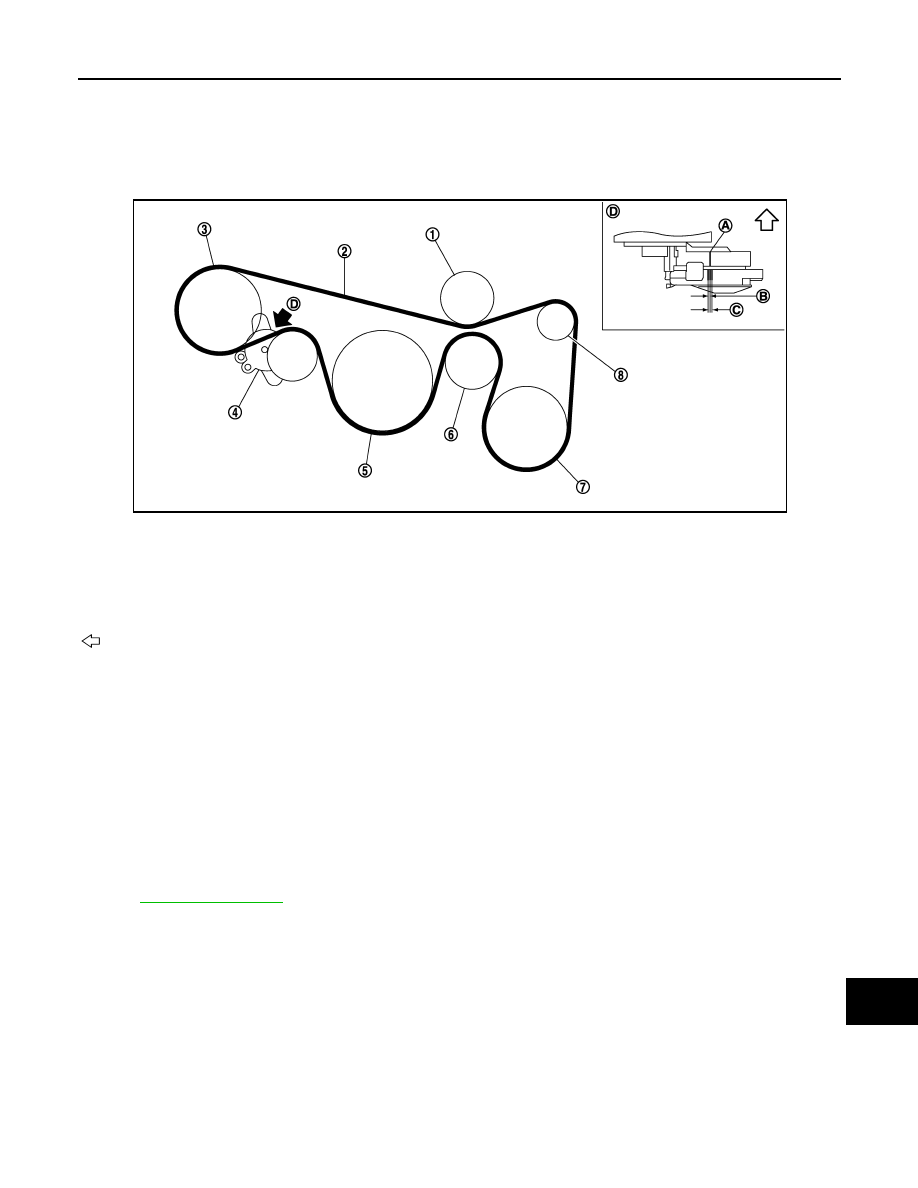Nissan Teana J32. Manual - part 801

ENGINE MAINTENANCE
MA-13
< ON-VEHICLE MAINTENANCE >
C
D
E
F
G
H
I
J
K
L
M
B
MA
N
O
A
ENGINE MAINTENANCE
DRIVE BELT
DRIVE BELT : Exploded View
INFOID:0000000003862446
DRIVE BELT : Checking
INFOID:0000000003862447
WARNING:
Be sure to perform the this step when engine is stopped.
• Check that the indicator (A) of drive belt auto-tensioner is within the possible use range (C).
NOTE:
• Check the drive belt auto-tensioner indication when the engine is cold.
• When new drive belt is installed, the indicator should be within the range (B) in the figure.
• Visually check entire drive belt for wear, damage or cracks.
• If the indicator is out of the possible use range or belt is damaged, replace drive belt.
DRIVE BELT : Tension Adjustment
INFOID:0000000003862448
.
ENGINE COOLANT
ENGINE COOLANT : Inspection
INFOID:0000000003862449
LEVEL
JPBIA1625ZZ
1.
Idler pulley
2.
Drive belt
3.
Power steering oil pump
4.
Drive belt auto-tensioner
5.
Crankshaft pulley
6.
Idler pulley
7.
A/C compressor
8.
Alternator
A.
Indicator
B.
Range when new drive belt is installed
C.
Possible use range
D.
View D
: Engine front